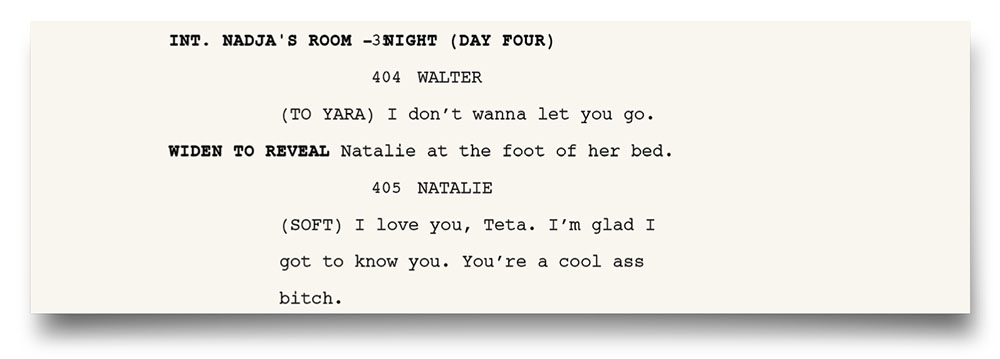
Courtesy of Netflix

Netflix’s Big Mouth spinoff sees the animated universe’s emotional monsters in a workplace setting as they manage the human “clients” to which they’re assigned. While Big Mouth centers on the nightmares of puberty, Human Resources tackles the complete human life span from birth to death — and this scene delves into the latter, with Amir and daughter Natalie facing the loss of Amir’s mother, Yara. Also at Yara’s deathbed is her lovebug Walter, the personification of that emotion. Showrunner Kelly Galuska notes how the scene balances the emotional weight and the irreverent comedy at the show’s core.
“We really wanted the show to be about the human experience entirely,” Galuska says. While the HR offices are in the tristate area, it was important to Galuska that the show depict “how people do things in other parts of the world.” Writer Mitra Jouhari, who is Iranian American, was vital for this storyline, as was voice actor Sabrina Jalees (playing Natalie’s sister, Nadia), whose father is Pakistani. The two “let us in on their families’ [stories] and the way that they dealt with death and dying in their cultures,” says Galuska.

Courtesy of Netflix
While the show addresses many of life’s trials and tribulations, Galuska says the writers consulted with experts to approach each topic authentically. Writing the character of Yara, who experienced dementia, called for an expert on Alzheimer’s disease. “We talked to neurologists about how your brain works,” she says, noting that collaborating on BoJack Horseman with creator Raphael Bob-Waksberg taught her the importance of “getting some vegetables with your treats.” Adds the showrunner: “This show, at its heart, is about normalizing the big feelings people have. There’s so much human experience out there that is like yours and unlike yours, and both are important.”

Courtesy of Netflix
While the “nutty” world of Big Mouth and Human Resources is a manic setting, the latter still aims to tackle more serious themes. “We represent the millions of voices we all have in our heads at once, but we’re seeing them as these kooky-looking creatures,” says Galuska of Walter the lovebug. “Even though this show has a lot of disgusting stuff, we always start from an emotional place.”

Courtesy of Netflix
“The end of somebody’s life is a very touching and important moment,” Galuska says. “We wanted to treat it with the reverence it deserved.”

Courtesy of Netflix
Galuska says experimentation is key, particularly for a scene like this one. “We do table reads and get reactions in the room, and then we make adjustments,” she explains. While this emotional scene is light on humor, the moments of levity help pack its punch: “You’re crying and then get a tiny bit of relief from the joke, and then you go back to crying.”

Courtesy of Netflix
This story first appeared in a June stand-alone issue of The Hollywood Reporter magazine. To receive the magazine, click here to subscribe.